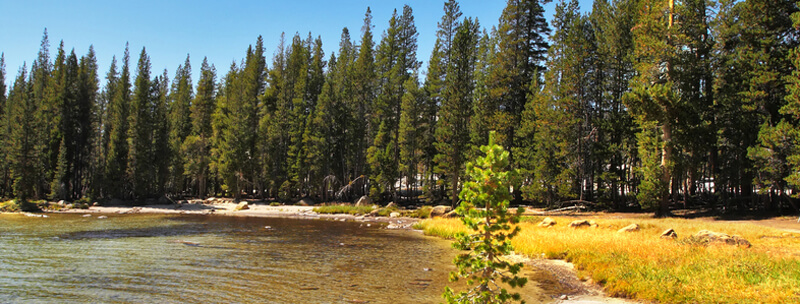The Superior Court, Law Division €“ Union County, recently held that Exxon Mobil Corporation is liable to the New Jersey Department of Environmental Protection ("NJDEP") pursuant to the Spill Compensation and Control Act, N.J.S.A. 58:10-23.11a et seq. ("Spill Act") for natural resource damages ("NRD") to restore natural resources injured by discharges of hazardous substances from two refineries. Damages for "lost use" of these natural resources, however, are not available pursuant to the Spill Act. New Jersey Department of Environmental Protection and Administrator, Spill Compensation Fund v. Exxon Mobil Corporation, Docket No. UNN-L-3026-04 (May 26, 2006). The decision has significance for thousands of contaminated sites for which NJDEP has announced its intention to seek NRD for lost use of groundwater.
Using private outside counsel, NJDEP sought recovery of NRD from Exxon Mobil arising from historic discharges of hazardous substances from two petrochemical facilities in Linden and Bayonne, New Jersey, known as the Bayway Refinery and Bayonne Refinery. Exxon Mobil's predecessor had entered into a 1991 Administrative Consent Order to remediate the refineries. NJDEP filed its complaint in August 2004, seeking NRD based upon three causes of action: Spill Act, public nuisance, and trespass. The decision addresses only the Spill Act claim.
NJDEP moved for summary judgment on Spill Act liability for NRD and for funding of a natural resource restoration plan. Exxon Mobil cross-moved, asserting that damages for "lost use" of natural resources are not available under the Spill Act. NRD for "lost use" typically compensates the public for the value of the services provided by the natural resources that are lost or impaired as a result of a discharge, including, for example, inability to use groundwater for drinking purposes. At the federal level, trustees of natural resources have long asserted claims for loss of services of natural resources that arise from a release of hazardous substances. Exxon Mobil argued that the plain language of the Spill Act does not authorize damages for such lost use of groundwater.
The Court agreed with Exxon Mobil. Following dicta of the New Jersey Supreme Court's decision in In re Kimber Petroleum Corp., 110 N.J. 69 (1988), the Court determined that "restoration" and "replacement" of damaged natural resources falls within the "cleanup and removal costs" recoverable by NJDEP pursuant to the Spill Act. Slip op. at 5-6. However, damages for lost use of such natural resources does not constitute restoration or replacement. The Court relied on the lack of any specific language in the Spill Act suggesting that damages for lost use of natural resources are recoverable. Id. at 7-8.
The Court compared other statutes authorizing recovery of NRD. The Court noted that loss of use is expressly identified as NRD recoverable pursuant to the federal Oil Pollution Act, 33 U.S.C. § 2701 et seq. The Court also stated that other statutes do not expressly identify lost use damages as recoverable, including New Jersey's Solid Waste Management Act, N.J.S.A. 13:1E-1 et seq., and Water Pollution Control Act, N.J.S.A. 58:10A-1 et seq., and the federal Comprehensive Environmental Response, Compensation and Liability Act, 42 U.S.C. § 9601 et seq. ("CERCLA"). Based on this comparison, the Court was reluctant to read into the Spill Act the availability of NRD for lost use. See id. at 8-9. The Court thus granted Exxon Mobil's motion for summary judgment with respect to NRD for lost use of natural resources.
Despite the Court's holding as to the Spill Act, the Court's decision does not affect the availability of NRD for loss of use of natural resources with respect to NJDEP's common law claims. Also of interest in the decision: the Court held that NRD does not constitute double recovery of the costs to clean up the discharge of hazardous substances; the Court would not rule as a matter of law whether Exxon Mobil's ecological studies prepared as part of the company's site investigation were a sufficient assessment of NRD. Id. at 12-13, 15.
Given that NJDEP's efforts to recover NRD at thousands of contaminated sites are based, at least in part, on recovery of "lost use" of groundwater, this decision is very significant. NJDEP has sought leave to appeal. Publicly, representatives of the agency maintain that the decision will have no effect on the NJDEP's filing of further NRD lawsuits, including claims for lost use of groundwater, or the development of a robust NRD program. We expect that these issues will be further addressed in the courts and through agency policy and rulemaking.
The Superior Court, Chancery Division €“ Mercer County, recently held that the Spill Act does not authorize NJDEP to seek an injunction compelling cleanup of a discharge of hazardous substances in a civil action brought pursuant to N.J.S.A. 58:10-23.11u. New Jersey Department of Environmental Protection v. Kafil et al. (Docket No. MER-C-175-01). The Court recognized NJDEP's authority to issue a cleanup Directive pursuant to the Spill Act.
In Kafil, NJDEP filed an order to show cause against the owners of eight service stations to compel cleanup of discharges from underground storage tanks. The Court interpreted narrowly NJDEP's right to seek an injunction under N.J.S.A. 58:10-23.11u.b.(1), stating that this Spill Act provision authorizes an action to "enjoin someone from acting" but not to "compel a party to take affirmative action," such as a cleanup of hazardous substances. The Court noted that the Spill Act authorizes NJDEP to direct a responsible party to clean up a discharge and, if that party fails to abide by the Directive, to remediate the property itself and seek treble damages. The Court reasoned that prohibiting NJDEP from seeking a court ordered injunction in the first instance compels NJDEP "to utilize its own environmental expertise and determine whether remediation is appropriate" and take these procedural steps before requiring a cleanup by a responsible party. NJDEP seems likely to appeal this decision.
In an April 10, 2006 decision, the Appellate Division required the City of Atlantic City ("City") to repay monies it withdrew from a condemnation deposit to satisfy a municipal tax lien, and allowed the condemnor, the Casino Redevelopment Investment Authority, to withdraw the re-deposited funds to compensate it for environmental cleanup costs. Typically, a municipal tax lien has priority status over all other liens against the property, except for specified exceptions. Even so, funds representing the fair market value of the property as if it is unaffected by contamination, are deposited into court during a condemnation action. Those funds do not necessarily belong to the condemnee since remediation costs are "transactional costs" which the condemnor is entitled to recoup from the deposit. Accordingly, a tax lien may only be satisfied from any surplus funds on deposit, after the condemnor recoups its remediation costs. The Court was careful to say that these costs do not take "priority" over other claims, but rather are part of the condemnation proceeding and thus are not part of the condemnee's interest in the property, which is what would be available to satisfy creditors, including municipal tax liens. Casino Reinvestment Development Authority v. Teller, 384 N.J. Super. 408 (App. Div. 2006).
At issue in this matter was the recent decision by NJDEP to rescind its approval, granted eighteen years ago, of a negative declaration pursuant to the Environmental Cleanup Responsibility Act, the predecessor to the Industrial Site Recovery Act, for a site which has since been discovered to be contaminated. The approval in question had been the subject of a prior similar challenge. See In re Railroad Associates, 313 N.J. Super. 225 (App. Div. 1998). This more recent matter presented a conflict between a former owner's expectation of finality or repose based upon a negative declaration approval that survived challenge, and the public interest in remediating a contaminated property as evidenced by legislative intent that cleanup responsibility be strictly imposed upon a property owner.
The Appellate Division found that there were not enough facts in the record to reach a conclusion as to whether NJDEP acted arbitrarily and capriciously in rescinding its approval. Reversing and remanding for a plenary hearing before the Office of Administrative Law, the Appellate Division believed that additional facts, including the circumstances of NJDEP's initial approval, were necessary to determine whether NJDEP's "extraordinary step" of rescinding its negative declaration approval was reasonable. I/M/O Vending Components, Inc. and Buildex, Inc., Docket No. A-6646-03T26646-03T2 (App. Div. May 9, 2006).
Faced with its first opportunity to determine the issue, the New Jersey Supreme Court recently held that an insurer under an occurrence-based excess insurance policy cannot decline coverage based upon the policyholder's failure to provide timely notice in the absence of a showing of appreciable prejudice. In the facts before the Court, the carrier issued a policy providing that, in effect, the insured forfeits coverage if that insured fails to provide written notice to the carrier within 120 days of an event giving rise to coverage under the policy. The carrier denied coverage to its insured for injuries resulting from an automobile accident based solely on the fact that the insured failed to provide notice to the carrier within 120 days as required under the policy. It was clear that the carrier suffered no prejudice as a result of the delay. The Court relied upon its prior decision in Cooper v. Gov't Employees Ins. Co., 51 N.J. 86 (1968), which held that a primary insurance carrier could not disclaim coverage unless it proved both a breach of the notice provision of the policy and a likelihood of appreciable prejudice. The Court found that the rationale of Cooper having the goal of spreading the risk and protecting innocent tort victims was equally applicable to an excess carrier, notwithstanding the policy language setting a specific time in which to provide notice. The Court did note, however, that the rule of appreciable prejudice would not apply to claims-made policies, which provide coverage specifically for claims made within the policy period. Gazis v. Miller, Docket No. A-32-05, (N.J., March 20, 2006).
The United States Court of Appeals for the District of Columbia Circuit ("D.C. Circuit") vacated the controversial Equipment Replacement Provision ("ERP Rule") on March 17, 2006. New York v. Environmental Protection Agency, 443 F.3d 880 (D.C. Cir. 2006). The ERP Rule, promulgated by the United States Environmental Protection Agency ("EPA") in 2003, Equipment Replacement Provision of the Routine Maintenance Repair and Replacement Exclusion, 68 Fed. Reg. 61,248 (Oct. 27, 2003), would have supplanted a current case-by-case analysis as to what constitutes exempt "routine maintenance, repair and replacement" work for purposes of Clean Air Act new source review ("NSR"). The Court found that the ERP Rule is contrary to the Clean Air Act, 42 U.S.C. § 7401 et seq. The NSR program applies to existing major stationary sources that are not subject to state of the art emissions controls because of their grandfathered status. NSR at an existing facility is triggered by a major "modification" of that facility. The Clean Air Act's general definition of "modification" is "any physical change in, or a change in the method of operation of, a stationary source which increases the amount of any air pollutant emitted by such source or which results in the emission of any air pollutant not previously emitted." 42 U.S.C. § 111(a)(4). A modification will require a facility to undergo the NSR permitting process, which may require the facility to offset emissions and achieve the lowest achievable emission rate in non-attainment areas, or use best available control technology in attainment areas.
Not every "change" made to a facility is a "change" that could be considered a "modification" that triggers NSR. A regulatory exception exists for routine maintenance, repair and replacement activities ("RMRR") that allow some activities undertaken at a facility to not be considered changes, and, potentially, modifications for NSR purposes, even if some minor increase in emissions may result from the work performed. Although listed as an exception, there is no regulatory definition of RMRR. Instead, EPA has used a multi-factored case-by-case analysis to determine if activities fall under the RMRR exception. This analysis takes into account the nature, extent, purpose, frequency, and cost of the activity.
The regulated community has long opposed this approach because it creates uncertainty as to whether specific activities are RMRR, or are indeed changes that, if emissions do increase, will be considered modifications and will trigger NSR. This uncertainty often led to different responses. Some facilities sought applicability determinations from the regulating agency, which was time consuming and expensive. Still others suspended the planned work. Others went ahead and made the replacements, a choice that has since lead to several major lawsuits by states and the federal government against electric utility companies. Some of these lawsuits were initiated during the Clinton presidency. Due to the change in Administration, the effectiveness of the NSR program was reevaluated and the ERP Rule was formulated to institute more certainty in the permitting process.
The ERP Rule would allow as RMRR the replacement of process unit components with identical components or their functional equivalents, so long as the replacement cost of the component fell below 20% of the process unit's replacement value, and the unit's basic design parameters and emission and operational limitations were not affected.
The case as presented by the parties, and the Court's decision as well, centered upon statutory construction. The Court focused on the parties' dispute as to Congress' intended meaning in the phrase "any physical change" in the definition of a "modification." Petitioners argued that the term "any physical change" should be read broadly. EPA argued that "physical change" is an ambiguous term and that the phrase "any physical change" only refers to those activities that EPA, in its discretion, deems to be a "physical change" for NSR purposes. The Court sided with the Petitioners, proposing that the term "any" has a broad meaning, and since Congress used the term "any," that therefore "EPA must apply NSR whenever a source conducts an emission-increasing activity that fits within the ordinary meanings of €˜physical change,'" and that "the context of the Clean Air Act warrants no departure from the word's customary effect." 443 F.3d at 880, 885-86. According to the Court, to say that a "physical change" is a narrow term and means only what the EPA says it means negates the usefulness of the word "any" within the definition of a modification. 443 F.3d at 886.
The EPA petitioned the D.C. Circuit on May 1, 2006 to rehear the case, and that petition was denied on June 30, 2006. It is possible that EPA may seek review by the United States Supreme Court.
When the United States Supreme Court decided the case of Cooper Industries, Inc. v. Aviall Services, Inc., 543 U.S. 157 (2004), it changed long-standing interpretations of CERCLA's contribution clause. Since then, the legal community has struggled with how to provide a recovery mechanism for potentially responsible and responsible parties who have undertaken voluntary cleanups.
The Court in Aviall held that "[a] private party who has not been sued under CERCLA Sections 106 or 107(c) may not obtain contribution under Section 113(f)(1) from other liable parties." This holding left many wondering if the long-standing interpretation of the cost recovery provisions of Section 107 should be used to provide recovery for potentially responsible and/or responsible parties. In the majority of jurisdictions, Section 107 has not been available to potentially responsible parties, with most courts believing that Section 113 provided adequate relief. To note, the Second Circuit has allowed limited use of Section 107 by PRPs that have not been sued or participated in administrative proceedings, and that have incurred response costs voluntarily. Consolidated Edison Co. of New York v. UGI Utilities, Inc., 423 F.3d 90 (2d Cir. 2005), petition for cert. filed Apr. 14, 2006 (No. 05-1323).
In a recent amicus curiae brief submitted in the case of Metropolitan Water Reclamation District of Greater Chicago v. North American Galvanizing and Coatings, Inc. in the United States Court of Appeals for the Seventh Circuit (No. 05-3299), the EPA has argued that Section 107's provision for cost recovery actions is not available to potentially responsible and responsible parties, even after the Aviall decision. This brief was submitted in light of the lower District Court holding that Metropolitan Water was entitled to an implied right of contribution under Section 107. The EPA asserted that this decision was incorrect since Metropolitan Water was not an innocent landowner, but instead a PRP not entitled to utilize the cost recovery provisions of Section 107.
The EPA's analysis extended the Aviall reasoning to all of Section 113(f). It reasoned that binding precedent in the Seventh Circuit mandated that PRPs bring their claims under Section 113, in recognition of the fact that these claims are essentially contribution actions. The EPA also argued against the recognition of an implied right of contribution under Section 107. It defended this position by explaining that the District Court's interpretation ignored the conditions set forth in Section 113, rendering them meaningless, and by arguing that allowing PRPs to recover under Section 107 would discourage settlement by PRPs, a consequence that is inconsistent with CERCLA's settlement scheme.
While the EPA brief recognized the exception for innocent landowners, it did not address the issue that has generated the most discussion since the Aviall decision €“ what relief exists for those potentially responsible parties who engage in voluntary cleanup. By not addressing this critical question, it remains to be determined how the true purpose of CERCLA - to cleanup contaminated properties - will be reconciled with the varying interpretations of Section 107.
On April 12, 2006, Appellate Division Judge Anthony J. Parrillo of the Superior Court of New Jersey issued an opinion upholding a controversial stormwater regulation that imposes 300-foot buffers around Category One waters, some of the most protected waters in the State. The decision, In the Matter of Stormwater Management Rules, Docket No. A-3847-03T3, granted deference to NJDEP to impose such restrictions despite the absence of express statutory authority.
As was discussed in our May 2004 issue of UPDATE, in January 2004 NJDEP adopted rules intended to establish a comprehensive regulatory framework to address water quality impacts caused by stormwater discharges. Perhaps the most contentious new regulation was N.J.A.C. 7:8-5.5(h), which established "special water resource protection areas" around New Jersey's Category One surface waters and their perennial or intermittent tributaries. The protective areas consist of 300-foot buffers on each side of these waters, composed of existing vegetation or vegetation allowed to follow natural succession. NJDEP calculates that 3,855 miles of rivers and streams and 10,219 acres of reservoirs have Category One protection.
The appellant, New Jersey Builders Association, argued that this regulation was beyond the scope of NJDEP's statutorily delegated authority and was, hence, ultra vires. In the alternative, the appellant contended that the regulation was unreasonable and invalid.
The Court considered the wide array of powers the Legislature has granted NJDEP in the past to address water quality, nonpoint source pollution control and stormwater, including the Stormwater Management Act. N.J.S.A. 40:55D-93 et seq. Moreover, it relied on the breadth of the regulations, which touched "all major development," N.J.A.C. 7:8-1.6(b), in order to "minimize the adverse impact of stormwater runoff[.]" N.J.A.C. 7:8-5.1(a). Based on these extensive grants of authority to the Department, the Court concluded that the Legislature impliedly authorized NJDEP to address water quality and pollution control by establishing the 300-foot buffer areas. The Court rejected the claim that, since in other cases the Legislature expressly granted to NJDEP the authority to plan land development or mandate buffers, such buffers were not authorized here.
The Court also rejected the argument that the regulation was unreasonable. The Court deferred to the agency's expertise in drafting technical subjects in this area. Given this deference, the Court held the regulation to be valid since there was a reasonable factual basis to support imposition of the buffers.
Although the appellant characterized the buffers as "no build zones," the Court reasoned that there is still development that can occur inside the special protection areas, including construction of single-family homes that were approved before February 2, 2004 where construction begins on or before February 2, 2009 that are not part of a larger development. N.J.A.C. 7:8-5.5(h)(5).
Also, the buffers can be reduced to 150 feet in certain limited circumstances. First, previous development may be allowed where the functional value and overall condition of the buffer area will be maintained. N.J.A.C. 7:8-5.5(h)(1)(ii). Second, some stabilization measures may reduce the buffer zone to 150 feet if the stormwater cannot comply with the Soil Erosion and Sediment Control Act. N.J.A.C. 7:8-5.5(h)(3). And third, a stream corridor protection plan developed by a regional stormwater management planning committee can reduce the buffer to 150 feet if it is approved by the Department. N.J.A.C. 7:8-5.5(h)(4).
Environmental regulation is often criticized for being onerous land use regulation in disguise. Certainly, the appellant shares this conclusion based on its characterization of the buffer zones as "no build zones." Whether justified by the Department's expertise or authorized by the Legislature, it is clear that the regulation carves out normally desirable property from development for the purpose of protecting particularly vulnerable state waters.
What's New at EPA
In April 2006, the EPA posted updated lists of Registered Fuels and Fuel Additives. These lists include an alphabetical list of registered motor vehicle gasoline and diesel fuels, a list of registered gasoline and diesel fuel additives and a list of certified detergent additives. All gasoline and diesel fuel additives are required to be registered in accordance with the regulations at 40 CFR 79. The updated lists can be found at http://www.epa.gov/oms/additive.htm#reglist. |
i-MapNJ DEP
In April 2006, NJDEP launched a newer version of their i-MapNJ DEP. This is a great environmental mapping tool with access to many GIS data layers. The newest version of the program includes nine new layers: Air Monitoring Stations, Freshwater Wetlands, Pinelands Management Area, Fish Index of Biotic Integrity, Mid-Atlantic States, Natural Heritage Priority Sites, Roads (TeleAtlas), Sewer Service Areas and Zip Codes. In addition, eight layers have been updated. The updated layers include Category One Waters, Congressional and Legislative Districts, Known Contaminated Sites, Surface Water Quality Standards, State Planning Areas, Sub-Watersheds (HUC14) and Watersheds by Name (HUC11). Roads (TIGER 2000) has been replaced with Roads (TeleAtlas). There are also some updated features to the i-Map. There is a new enhanced printing functionality which allows you to choose the output size. One can also now use latitude and longitude coordinates to "Find Location of Interest" by "Coordinate." i-MapNJ is online at: Vapor Intrusion Information
NJDEP has posted updated Vapor Intrusion information on the Vapor Intrusion section of the NJDEP Site Remediation & Waste Management website at http://www.nj.gov/dep/srp/guidance/vaporintrusion/.
As of March 2006, the Vapor Intrusion Screening Level Tables have been updated. Also, newly available are the Johnson & Ettinger Model Spreadsheets €“ NJDEP version, as well as the Combined Chain of Custody & Field Test Data Sheet and instructions on its use.
NJDEP Assesses Status of New Jersey's Coast
NJDEP has issued its Draft Coastal Management Program Assessment. The Federal Coastal Zone Management Act requires New Jersey to file an assessment of its coastal zone management program every five years. This assessment is meant to provide a strategy for enhancing the aquaculture, preventing coastal hazards, protecting coastal wetlands, assessing cumulative and secondary impacts, energy and government facility siting, reducing marine debris, protecting ocean resources, increasing public access and determining special area management planning guidance for assessment. The National Oceanic and Atmospheric Administration provides guidance to New Jersey in preparation of this assessment. NJDEP's assessment of New Jersey's coast includes the 245 New Jersey municipalities that make up New Jersey's coastal zone.
Some of the highlights of the report include attention to the decline in the shellfish population in New Jersey. NJDEP recommends modifications to existing rules and regulations to restore shellfish populations and to increase permit compliance. Additionally, fish stocks are at high risk because of habitat degradation and increased contaminant loading. Commercial and recreational fishing are also at high risk because of loss of access to fishing grounds.
Another issue thoroughly discussed in the report is the issue of public access to New Jersey's coast. NJDEP boasts that through land acquisitions programs like the Coastal and Estuarine Land Conservation Program and Green Acres, more space has been preserved and is open to the public. However, NJDEP states that more needs to be done to assure sufficient public access due to the increase in development along the coast. NJDEP, through its coastal permitting programs, also seeks to increase public access. Currently, NJDEP requires all coastal permits that are granted to include conditions that require public access as a means to compensate for any losses that may result from new development. In furtherance of NJDEP's assessment of public access, a GPS inventory of all public access sites along the New Jersey coast has recently been completed. NJDEP determined that there are currently over 13,000 access ways. NJDEP hopes to eventually provide information on these access points on its website.
The assessment may be viewed at http://www.nj.gov/dep/cmp/czm_309.html.
The new Legislative session has been very active. Following are the environmental bills that have been introduced:
|
A1893, A1894 Requires any person performing remediation of a contaminated site to provide written notice to the municipality. |
A2112 Concerns the location of hazardous substances in flood plains. |
|
A2146 Creates a land use court. |
A2160 Makes various changes to laws governing underground storage tanks. |
|
A2188 Revises provisions of the Coastal Area Facility Review Act. |
A2227 Requires State to hold a local public hearing prior to State, county or nonprofit organization acquiring and preserving any open space in already substantially-preserved municipalities. |
|
A2240 Repeals law expediting certain State permits. |
A2296 Establishes "Industrial Facilities Security and Preparedness Study Commission;" appropriates $25,000 for this purpose. |
|
A2321 Requires NJDEP to classify certain reservoirs and reservoir feeder streams as Category One waters. |
A2423 Places temporary moratorium of 48 months on certain uses of eminent domain; creates Eminent Domain Study Commission to examine its use statewide. |
|
A2485 Requires NJDEP to conduct testing of school grounds for hazardous substances under certain circumstances. |
A2604 Establishes certain statutory functions within BPU and transfers statutory authority for regulation of solid waste from BPU to NJDEP. |
|
A2736 Amends definition of "freshwater wetland" to exclude man-made swales, canals, ruts and drainage ditches. |
A2795 Requires administrative law judge to make final decision in certain contested cases. |
|
A2804 Prohibits manufacture, sale, use and burning of creosote or creosote-treated products. |
A2834 Repeals Highlands planning and environmental permitting provisions of the Highlands Water Protection and Planning Act, and amends various statutes to reflect repeal thereof. |
|
A2850 "Plastic Container Recycling Enhancement Act." |
A2915 Revises Highlands Water Protection and Planning Act; repeals law expediting certain State permits. |
|
A2926 Requires refund of application fee to persons exempt from the Highlands Water Protection and Planning Act. |
S1310 Requires NJDEP inspection at Industrial Site Recovery Act site at which soil sampling is required. |
|
S1463 Incorporates regional water resource management considerations within county master planning, site plan and subdivision approval. |
S1473 Changes funding limits for grants to local governments from hazardous discharge fund for site remediation. (Passed both houses, July 8, 2006.) |
|
S1572 Prohibits adoption of soil remediation standards until completion of Soil Remediation Advisory Task Force Report; creates Soil Remediation Advisory Task Force. |
S1588 Provides that expiration of all CAFRA coastal centers shall be extended. |
|
S1708 Requires written notice to municipalities concerning contaminated sites. (Signed into law, August 2, 2006.) |
S1712 Eliminates the statute of limitations for certain environmental crimes and crimes causing widespread injury or damage. (Passed Senate and received in Assembly, June 26, 2006.) |
|
S1769 Clarifies and codifies certain existing hazardous substance reporting requirements for industrial facilities. |
ACR126 Amends Constitution to dedicate water consumption and diversion tax revenue for public acquisition of lands within the Highlands Region and the Pinelands by the State which are identified as lands of exceptional natural resource value for water resources. |
|
ACR138 Proposes Constitutional amendment to limit exercise of eminent domain to acquisition of land for essential public purposes. |
ACR161 Proposes constitutional amendment to limit use of condemnation to traditional public purposes; repeals constitutional provision allowing condemnation and long-term tax exemptions for redevelopment projects. |
|
ACR168 Proposes constitutional amendment to restrict use of condemnation power against non-blighted property for private economic development purposes. |
S. 482, a bill which makes changes to the laws governing underground storage tanks ("USTs"), was introduced in the Senate in January 2006, and recently signed into law by Governor Corzine. The new law amends the New Jersey Water Pollution Control Act, N.J.S.A. 58:10A-1 et seq. (the "Act") to expand the availability of funding for remediation, replacement and closure costs through the Petroleum Underground Storage Tank Remediation, Upgrade, and Closure Fund ("UST Fund") to "non-regulated" USTs.M
Financial assistance though the UST Fund can be in the form of grants and loans. The monies currently apply to remediation, upgrade, or closure costs associated with USTs. Eligible recipients include (1) owners or operators of fewer than ten petroleum USTs, who have a net worth of under $3,000,000 (increased from $2,000,000) and are unable to obtain commercial loans for the necessary work; (2) owners or operators of residential heating oil USTs; (3) public entities that own or operate petroleum USTs; and (4) higher education institutions that own or operate USTs. The new law expands the scope of covered USTs to include unregulated USTs, which are USTs that were not required to upgrade pursuant to C.58:10A-21 et seq. or 42 U.S.C. § 6991 et seq. Also expanded are the types of work for which funding may be available; i.e., closure and replacement costs (subject to a limit) for unregulated USTs that are not necessarily leaking, as opposed to only remediation costs for unregulated USTs that have leaked.
The new law also extends additional loan monies to parties whose regulated USTs have already been upgraded but now seek to further upgrade or replace the USTs.
States participating in the Regional Greenhouse Gas Initiative ("RGGI") released a draft model rule ("Draft Rule") on March 23, 2006 for public comment through May 22, 2006, with revisions based upon comments due later in the summer of 2006. The RGGI is a cooperative effort among nine Northeast and Mid-Atlantic states to design a regional cap-and-trade program covering carbon dioxide emissions from power plants, with the intention of possibly extending coverage to other emission sources and other greenhouse gasses other than carbon dioxide. The participating states are Connecticut, Delaware, Maine, New Hampshire, New Jersey, New York, and Vermont, with several other states such as Pennsylvania and Maryland observing.
The Draft Rule would impose a carbon dioxide cap-and-trade program on fossil fuel-fired units serving electric generators with nameplate capacities of 25 megawatts and greater, starting in September 2009. The cap-and-trade system would seek to stabilize emissions through 2014, and then reduce emissions by 10% by 2018. Facilities would need allowances to emit certain amounts of carbon dioxide. To provide flexibility, facilities would be able to offset emissions and "bank" allowances, as is done in the current federal acid rain cap-and-trade program for sulfur dioxide emissions.
The Draft Rule may be accessed at http://www.rggi.org/.
The Blue Ribbon Panel on Development of Wind Turbine Facilities in Coastal Waters ("Panel") issued its Final Report ("Final Report") to Governor Jon S. Corzine on April 22, 2006. The Panel's Final Report was required by Richard J. Codey's December 23, 2004 Executive Order No. 12, which called for the Panel to submit a report identifying the necessity of and evaluating economic and environmental costs related to offshore wind turbine facilities as alternative sources of electric power.
Wind energy constitutes one potential method of diversifying the State's electric energy sources. New Jersey's Board of Public Utilities has established a Renewable Portfolio Standard requiring that renewable energy sources supply 20% of New Jersey's electricity demand by 2020. Offshore wind energy projects have been proposed off the coasts of Massachusetts, Long Island, and New Jersey. The proposed Cape Wind Project in Massachusetts has prevailed in litigation up through the First Circuit as to federal permitting issues, and could become the first offshore wind energy project in the United States if it can survive further federal regulatory review and economic factors. Understanding that certain waters offshore may be suitable for a project similar to that of Cape Wind, New Jersey has decided to review this technology in a reasonably objective manner. This was the reason for the Panel's creation in 2004.
Having conducted its review, the Panel has made the following findings: New Jersey faces challenges as to energy supply that require bold action; the State must be a leader in developing clean and renewable energy sources; offshore wind technology offers potential benefits and drawbacks, but the extent of each is still unknown; and a practical application of the technology will provide further useful information.
Considering its findings, the Panel made the following recommendations in its Final Report:
It is anticipated that acquisition of this data and any construction of a test project could take several years. Nationwide, there is a moratorium on offshore wind energy projects in federal waters (i.e., beyond three miles from shore) imposed while the U.S. Department of Interior's Mineral Management Service ("MMS") prepares a Programmatic Environmental Impact Statement ("PEIS") assessing general impacts, and develops regulations to implement Section 388 of the Energy Policy Act of 2005, Pub. L. No. 109-58, 119 Stat. 594 (Aug. 8, 2005). (Section 388 granted the MMS permitting jurisdiction over energy-related uses on the outer continental shelf in federal waters.) It is expected that the PEIS and the Section 388 regulations may be completed by 2008. In the meantime, New Jersey will collect necessary data and will develop plans for a test project.
The Final Report and other information may be accessed at: http://www.njwindpanel.org/.
Information related to the MMS and Section 388 of the Energy Policy Act of 2005 may be accessed at: http://www.mms.gov/2005EnergyPolicyAct.htm.
On June 19, 2006, the United States Supreme Court decided the combined case of Rapanos v. United States, No. 04-1034, and issued five opinions as to wetlands jurisdiction, without a majority opinion. Nevertheless, enough votes existed to remand the two underlying cases on the grounds that the jurisdictional standards applied below were too broad. The judicial and regulatory responses to Rapanos will be worth noting.
The two appellate cases subject to the Court's decision were Rapanos v. United States, 376 F.3d 629 (6th Cir. 2004), and Carabell v. U.S. Army Corps of Engineers, 391 F.3d 704 (6th Cir. 2004). Both involved the jurisdiction of the federal government over wetlands located distant from waters traditionally subject to federal jurisdiction. Federal jurisdiction over wetlands, exercised by the U.S. Army Corps of Engineers (the "Corps"), is based upon the federal Clean Water Act, 33 U.S.C. § 1251 et seq., and the Corps' regulations at 33 C.F.R. 320-330. Jurisdiction applies to "navigable waters," which include "waters of the United States." The regulatory language extends jurisdiction to wetlands adjacent to waters otherwise subject to jurisdiction, such as tributaries. The Rapanos case addressed wetlands that were adjacent to or had some connection to drains, drainage ditches, or similar waters that, in turn, had connections to navigable waters.
Three of the Rapanos opinions are primary, as each asserts unique and divergent positions as to jurisdiction in the context of wetlands located near other waters, such as tributaries. The plurality opinion written by Justice Scalia and joined by three other justices proposed jurisdiction only over wetlands having surficial connections to non-intermittent bodies of water connected to traditional navigable waters. If applied, this view would dramatically curtail the Corps' current exercise of jurisdiction. The dissent authored by Justice Stevens advocated a broad application of jurisdiction over wetlands based on the hydrological connections existing between wetlands and other water bodies or channels that could qualify as tributaries. Justice Kennedy's concurrence adopted a moderate centrist approach, applying, in the absence of pertinent federal regulations, a "significant nexus" test. This test would determine jurisdiction on a case-by-case basis by examining the chemical, physical, and biological connections of a particular wetland to a navigable water. Such a determination then could be applied to other similarly-situated wetlands.
The current consensus is that Justice Kennedy's significant nexus test may prevail as the applicable standard in the short-term. In fact, this test already has been applied in at least two federal cases, Northern California River Watch v. City of Healdsburg, 2006 WL 2291155 (9th Cir., Aug. 10, 2006) (calling Justice Kennedy's opinion in Rapanos "the controlling opinion," and, in the case at hand, finding jurisdiction over the discharge of wastewater into a man-made pond because the wastewater's chloride seeped into an adjacent river and affected the river's physical, biological and chemical integrity), and United States v. Chevron Pipe Line Co., 2006 U.S. Dist. LEXIS 47210 (N.D. Tex., June 28, 2006) (finding no significant nexus between oil deposits in a dry intermittent stream and the fork of a navigable river located over forty miles from the site of the oil deposit).
Despite some courts' use of Justice Kennedy's test, uncertainty remains as to the exact nature and extent of the Corps' post-Rapanos jurisdiction. The Corps and EPA are developing guidance for use by the Corps in making jurisdictional determinations. That guidance is expected to be issued in the near future. Comparable rulemaking or legislation is not yet expected.










